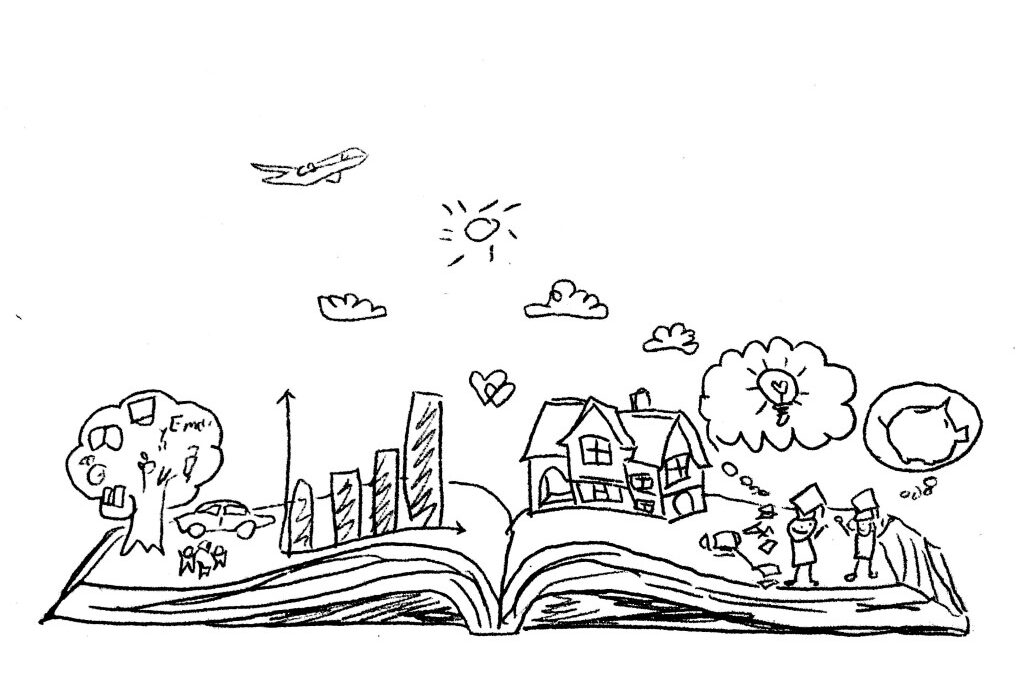
by Dr. Talia Marcheggiani, ND | Jul 20, 2015 | Art Therapy, Community, Creativity, Docere, Education, Emotions, Empathy, Finding yourself, Healing Stories, Health, Medicine, Mental Health, Mind Body Medicine, Mindfulness, Narrative Therapy, Philosophy, Politics, Psychology, Relationships, Self-reflection, Treating the Cause, Volunteering
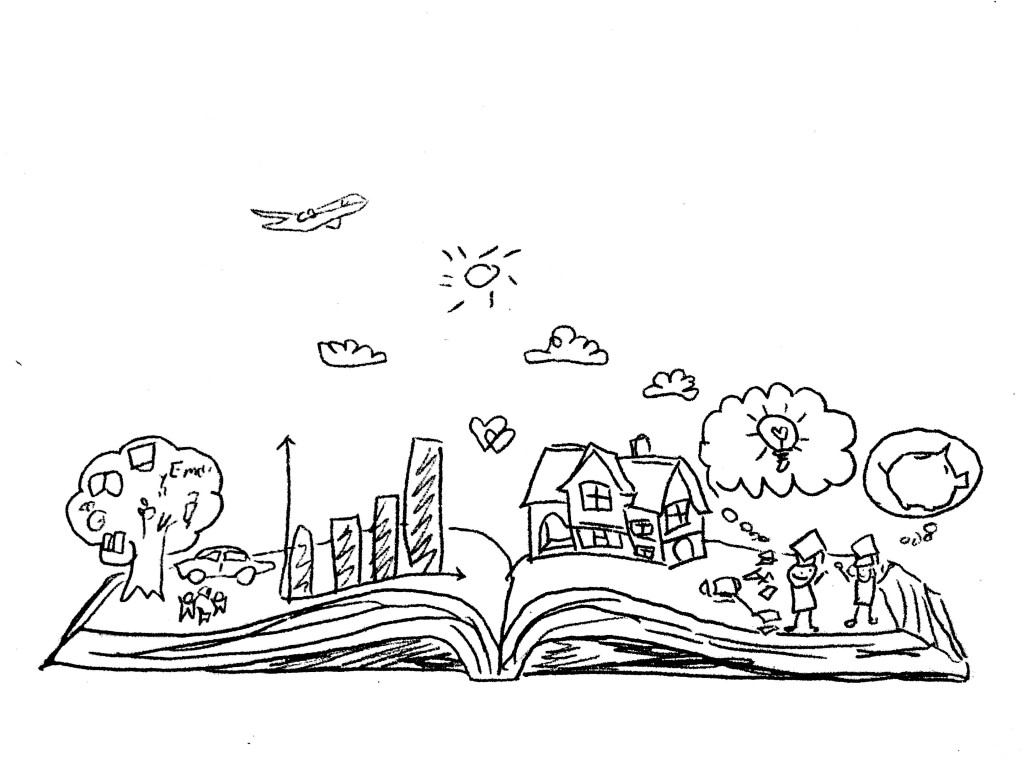 As a child, I was obsessed with stories. I wrote and digested stories from various genres and mediums. I created characters, illustrating them, giving them clothes and names and friends and lives. I threw them into narratives: long stories, short stories, hypothetical stories that never got written. Stories are about selecting certain events and connecting them in time and sequence to create meaning. In naturopathic medicine I found a career in which I could bear witness to people’s stories. In narrative therapy I have found a way to heal people through helping them write their life stories.
As a child, I was obsessed with stories. I wrote and digested stories from various genres and mediums. I created characters, illustrating them, giving them clothes and names and friends and lives. I threw them into narratives: long stories, short stories, hypothetical stories that never got written. Stories are about selecting certain events and connecting them in time and sequence to create meaning. In naturopathic medicine I found a career in which I could bear witness to people’s stories. In narrative therapy I have found a way to heal people through helping them write their life stories.
We humans create stories by editing. We edit out events that seem insignificant to the formation of our identity. We emphasize certain events or thoughts that seem more meaningful. Sometimes our stories have happy endings. Sometimes our stories form tragedies. The stories we create shape how we see ourselves and what we imagine to be our possibilities for the future. They influence the decisions we make and the actions we take.
We use stories to understand other people, to feel empathy for ourselves and for others. Is there empathy outside of stories?
I was seeing R, a patient of mine at the Yonge Street Mission. Like my other patients at the mission health clinic, R was a young male who was street involved. He had come to see me for acupuncture, to help him relax. When I asked him what brought him in to see me on this particular day, his answer surprised me in its clarity and self-reflection. “I have a lot of anger,” He said, keeping his sunglasses on in the visit, something I didn’t bother to challenge.
R spoke of an unstoppable rage that would appear in his interactions with other people. Very often it would result in him taking violent action. A lot of the time that action was against others. This anger, according to him, got him in trouble with the law. He was scared by it—he didn’t really want to hurt others, but this anger felt like something that was escaping his control.
We chatted for a bit and I put in some acupuncture needles to “calm the mind” (because, by implication, his mind was not currently calm). After the treatment, R left a little lighter with a mind that was supposedly a little calmer. The treatment worked. I attributed this to the fact that he’d been able to get some things off his chest and relax in a safe space free of judgment. I congratulated myself while at the same time lamented the sad fact that R was leaving my safe space and re-entering the street, where he’d no doubt go back to floundering in a sea of crime, poverty and social injustice. I sighed and shrugged, feeling powerless—this was a fact beyond my control, there wasn’t anything I could do about it.
The clinic manager, a nurse practitioner, once told me, “Of course they’re angry. These kids have a lot to be angry at.” I understood theoretically that social context mattered, but only in the sense that it posed an obstacle to proper healing. It is hard to treat stress, diabetes, anxiety and depression when the root causes or complicating factors are joblessness, homelessness and various traumatic experiences. A lot of the time I feel like I’m bailing water with a teaspoon to save a sinking ship; my efforts to help are fruitless. This is unfortunate because I believe in empowering my patients. How can I empower others if I myself feel powerless?
I took a Narrative Therapy intensive workshop last week. In this workshop we learn many techniques for empowering people and healing them via the formation of new identities through storytelling. In order to do this, narrative therapy extricates the problem from the person: the person is not the problem, the problem is the problem. Through separating problems from people, we are giving our patients the freedom to respond to or resolve their problems in ways that are empowering.
Naturopathic doctors approach conditions like diabetes from a life-style perspective; change your lifestyle and you can change your health! However, when we fail to separate the patient from the diabetes, we fail to examine the greater societal context that diabetes exists in. For one thing, our culture emphasizes stress, overwork and inactivity. The majority of food options we are given don’t nourish our health. Healthy foods cost more; we need to work more and experience more stress in order to afford them. We are often lied to when it comes to what is healthy and what is not—food marketing “healthwashes” the food choices we make. We do have some agency over our health in preventing conditions like diabetes, it’s true, but our health problems are often created within the context in which we live. Once we externalize diabetes from the person who experiences it, we can begin to distance our identities from the problem and work on it in creative and self-affirming ways.
Michael White, one of the founders of Narrative Therapy says,
If the person is the problem there is very little that can be done outside of taking action that is self-destructive.
Many people who seek healthcare believe that their health problems are a failure of their bodies to be healthy—they are in fact the problem. Naturopathic medicine, which aims to empower people by pointing out they can take action over their health, can further disempower people when we emphasize action and solutions that aim at treating the problems within our patients—we unwittingly perpetuate the idea that our solutions are fixing a “broken” person and, even worse, that we hold the answer to that fix. If we fail to separate our patients from their health conditions, our patients come to believe that their problems are internal to the self—that they or others are in fact, the problem. Failure to follow their doctor’s advice and heal then becomes a failure of the self. This belief only further buries them in the problems they are attempting to resolve. However, when health conditions are externalized, the condition ceases to represent the truth about the patient’s identity and options for healing suddenly show themselves.
While R got benefit from our visit, the benefit was temporary—R was still his problem. He left the visit still feeling like an angry and violent person. If I had succeeded in temporarily relieving R of his problem, it was only because I had acted. At best, R was dependent on me. At worst, I’d done nothing, or, even worse, had perpetuated the idea that there was something wrong with him and that he needed fixing.
These kids have a lot to be angry at,
my supervisor had said.
R was angry. But what was he angry at? Since I hadn’t really asked him, at this time I can only guess. The possibilities for imagining answers, however, are plentiful. R and his family had recently immigrated from Palestine, a land ravaged by war, occupation and racial tension. R was street-involved, living in poverty in an otherwise affluent country like Canada. I wasn’t sure of his specific relationship to poverty, because I hadn’t inquired, but throughout my time at the mission I’d been exposed to other narratives that may have intertwined with R’s personal storyline. These narratives included themes of addiction, abortion, hunger, violence, trauma and abandonment, among other tragic experiences. If his story in any way resembled those of the other youth who I see at the mission, it is fair to say that R had probably experienced a fair amount of injustice in his young life—he certainly had things to be angry at. I wonder if R’s anger wasn’t simply anger, but an act of resistance against injustice against him and others in his life: an act of protest.
“Why are you angry?” I could have asked him. Or, even better, “What are you protesting?”
That simple question might have opened our conversation up to stories of empowerment, personal agency, skills and knowledge. I might have learned of the things he held precious. We might have discussed themes of family, community and cultural narratives that could have developed into beautiful story-lines that were otherwise existing unnoticed.
Because our lives consist of an infinite number of events happening moment to moment, the potential for story creation is endless. However, it is an unfortunate reality that many of us tell the same single story of our lives. Oftentimes the dominant stories we make of our lives represent a problem we have. In my practice I hear many problem stories: stories of anxiety, depression, infertility, diabetes, weight gain, fatigue and so on. However, within these stories there exist clues to undeveloped stories, or subordinate stories, that can alter the way we see ourselves. The subordinate stories of our lives consist of values, skills, knowledge, strength and the things that we hold dear. When we thicken these stories, we can change how we see ourselves and others. We can open ourselves up to greater possibilities, greater personal agency and a preferred future in which we embrace preferred ways of being in the world.
I never asked R why the anger scared him, but asking might have provided clues to subordinate stories about what he held precious. Why did he not want to hurt others? What was important about keeping others safe? What other things was he living for? What things did he hope for in his own life and the lives of others? Enriching those stories might have changed the way he was currently seeing himself—an angry, violent youth with a temper problem—to a loving, caring individual who was protesting societal injustice. We might have talked about the times he’d felt anger but not acted violently (he’d briefly mentioned turning to soccer instead) or what his dreams were for the future. We might have talked about the values he’d been taught—why did he think that violence was wrong? Who taught him that? What would that person say to him right now, or during the times when his anger was threatening to take hold?
Our visit might have been powerful. It might have opened R up to a future of behaving in the way he preferred. It might have been life-changing.
It definitely would have been life-affirming.
Very often in the work we do, we unintentionally affirm people’s problems, rather than their lives.
One of the course participants during my week-long workshop summed up the definition of narrative therapy in one sentence,
Narrative therapy is therapy that is life-affirming.
And there is something very healing in a life affirmed.
More:
The Narrative Therapy Centre: http://www.narrativetherapycentre.com/
The Dulwich Centre: http://dulwichcentre.com.au/
Book: Maps of Narrative Practice by Michael White
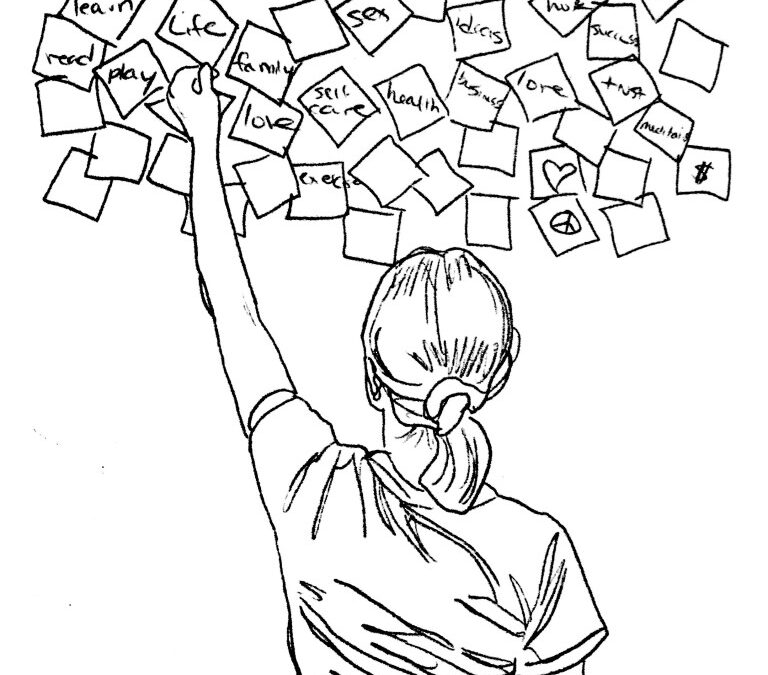
by Dr. Talia Marcheggiani, ND | May 24, 2015 | Art, Balance, Canadian College of Naturopathic Medicine, Creativity, Education, Exercise, Family, Finding yourself, Happiness, Healing Stories, Health, Ideal You, Letting Go, Listening, Medicine, Meditation, Mental Health, Mind Body Medicine, Mindfulness, Motivation, Patience, Personal, Psychology, Relationships, Self-care, Self-reflection, Stress
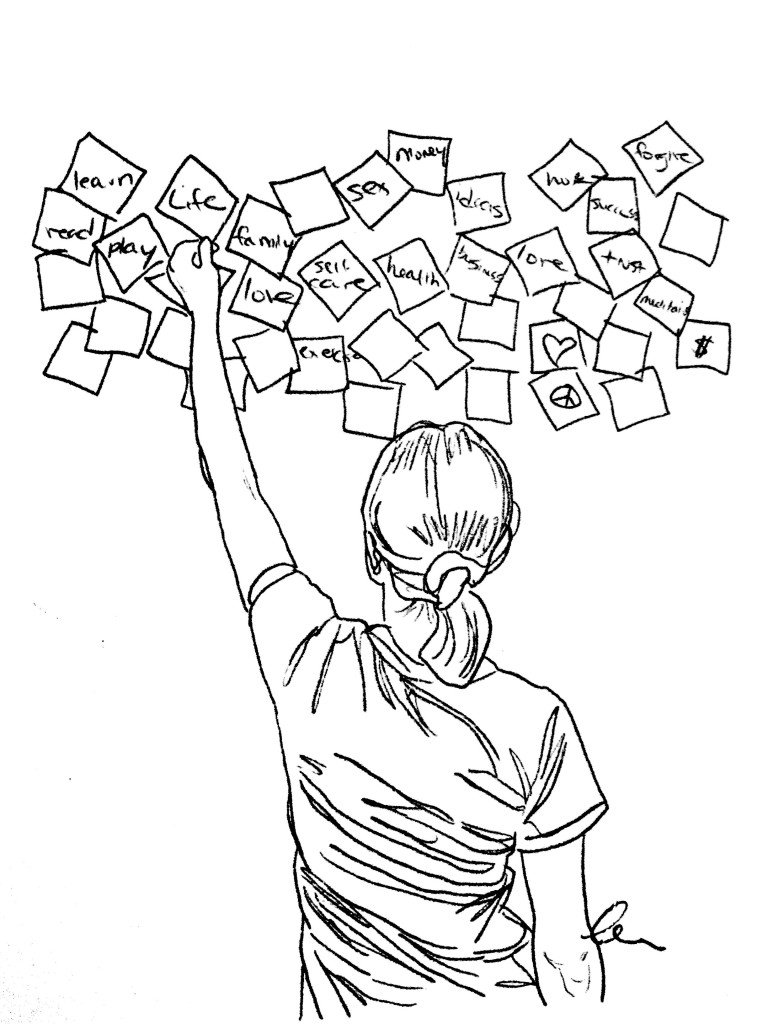 According to James Altucher, author and entrepreneur, it is possible to reinvent yourself in 5 years. In his book, The Power of No, he tells us how to reinvent our lives by first saying a big, fat No to all the things that don’t serve us—toxic friendships and relationships, stagnant 9-5’s, harmful behaviours, negative thought patterns and, well, just things we simply don’t want to do—in order to free up our lives for greater happiness, abundance and creativity.
According to James Altucher, author and entrepreneur, it is possible to reinvent yourself in 5 years. In his book, The Power of No, he tells us how to reinvent our lives by first saying a big, fat No to all the things that don’t serve us—toxic friendships and relationships, stagnant 9-5’s, harmful behaviours, negative thought patterns and, well, just things we simply don’t want to do—in order to free up our lives for greater happiness, abundance and creativity.
It is now the end of May. For me, May has been a month of reinvention. For the past 10 years it has been the month of closing and good-byes, specifically the end of the school year. The Canadian College of Naturopathic Medicine class of 2015 has graduated, as I did last year. Last week my Facebook feed was infiltrated with pictures of flowers, long black gowns and tearfully heartfelt thank-yous to the friends and family that got my colleagues through their gruelling 4 years of naturopathic medical education. Last year that was me—I remember the black gowns, the face-ache from smiling, drinking a little too much at grad formal and winning an award (“Most Likely to Write a Best Seller”—complete with misspelling of “bestseller”) while eating Portuguese chicken at my house afterwards with my friend F and his family. This year, one year later, I watch these events from afar. May 2014 offered new beginnings and chance for reinvention. I was dating, enjoying the sunshine, looking forward to a trip to India, looking forward to beginning a practice as a naturopathic doctor. Mostly, last May was about the death of one life—that of a naturopathic student—and the birth of a new one: a complete reinvention.
This year the rest of my life stretches before me like one long expansive road. My career is underway. My dating life is stagnant. The next steps are more like small evolutions rather than massive, monumental milestones. I most likely will not don a black gown again, but I can reinvent myself by following the 20 steps below. I can always check back into these practices when I’m feeling stuck, alone or afraid. When life is not going my way, there is always a chance to begin a reinvention of some sort. And, I remind myself, my current reinvention is likely well underway. Since I graduated last May, I have been in the process of reinventing: just 4 more years left until I complete my obligatory 5. While 4 years sounds like a long time, I know from experience that 4-year cycles turn over within the blink of an eye.
What stage are you on in your own personal reinvention? Wherever you are, follow these steps to reinvent yourself:
1) Say no. Say no to all the things that you don’t want to do. Say no to things that cause you harm: emotional harm, mental harm, physical harm, loss of time, loss of money, loss of sleep. We need to say no first before we can free up the time and energy to say yes to the things that we actually want. In fact, say “no” to all the things you aren’t saying “F#$% YES!” to. Read this article for more information.
2) Re-examine your relationships. Who doesn’t make you feel good? Who makes you doubt yourself? Who do you feel will reject you if you act like your true self around them? Gracefully begin to distance yourself from these relationships. You might feel lonely for some time, but loneliness is sometimes a good thing.
3) Clear out your junk. Get rid of everything you don’t use, don’t like and don’t need. Marie Kondo, in the Life-changing Magic of Tidying Up, tells us to donate, trade, sell or dispose of everything we own that doesn’t bring us joy. I think that that is a wonderful litmus test to decide what we should be holding on to. Personally, one thing that did not bring me joy was an awful old desk in my room. It was uncomfortable and ugly. I replaced it with a free desk someone I knew was throwing away. I also donated 7 garbage bags of things: books, clothes and keepsakes from when I was a child. Since then, I feel like my room has been infused with a little bit more joy. Remove all your joyless items from your life and observe how your energy changes.
4) Sit in silence. This could be meditation, staring at the wall, chanting or simply breathing. Do it with eyes closed or open. I start at 20 minutes of meditation—a meditation teacher I had told me to always use a timer to increase self-discipline—and work up to 30 some days and an hour on really good days. Start with 5 minutes. Sitting in silence helps to quiet the mind and bring us back to the present. You’ll be amazed at what you discover when you sit in silence. Read some books on meditation or take a meditation course for specific techniques, but simply sitting in silence can offer amazing benefits as well.
5) Explore the topics that interested you as a child. When I got back into painting in 2008, after getting a science degree when I’d always been interested in the art, my life changed a little bit. I started a blog in 2011; it happens to be the one you’re reading now. Get back into whatever you were passionate about as a child, even if it’s just a cartoon you used to watch.
6) Start a gratitude jar. Once a day write down something that you are grateful for—use as much detail as possible—and toss it in a jar or shoebox. When you’re feeling low, open up the jar and read the messages you’ve left yourself. I also tried a similar exercise with things I wanted to manifest or achieve. A few months later I read my entries and realized I’d achieved every single one. It’s amazing what kind of energy glass jars can attract.
7) Read. According to James Altucher, you need to read 500 books on a given topic in order to become an expert on something. You have 5 years to reinvent yourself, so start your reading now. Read one book and then, from that book, read another. It’s interesting where reading trails can lead us. I read one book, which mentions another book, read that book and then end up in a new world I never knew existed. I personally feel a little anxious when I don’t have a book beside my bed, but if you’re new to reading, start small. There are two books that I’ve already mentioned in this blog post; start from either of them and then go from there. The next on my list is The Artist’s Way, by Julia Cameron, which was mentioned in The Power of No. Who knows where that one will lead me.
8) Get 8-9 hours of sleep a night.
9) Eat your vegetables, especially leafy greens. Avoid sugar, moderate alcohol and caffeine. Eat healthy protein and healthy fats (if you don’t know what those are, welcome to my blog! browse more of my articles on healthy eating or book an appointment with a naturopathic doctor like me!—shameless self promo).
10) Exercise. Enjoy some movement every day.
11) Exercise your idea muscle. According to James Altucher, creativity is a muscle that we need to exercise lest it atrophies, like any other muscle. He recommends getting a journal and writing 10-20 ideas in it every day. They don’t have to be good ideas, just any ideas. Removing the filter of self-judgement is important for allowing creativity to flourish. We need to strengthen that muscle.
12) Get some psychotherapy. Start dealing with childhood wounds and meeting your inner critic. Address your erroneous beliefs about yourself, the world and the past. Contact me to learn where to get quality psychotherapy in Toronto at an affordable price.
13) Expand your social circle. If you find that after following step 2 your social circle has gotten smaller, start to find ways to expand it. My favourite way to reinvent my social interactions, and thus begin to reinvent my life, is to look up a meetup.com group and start attending. If you’re not sure about a meet-up group you’ve attended, give it 2 more tries before deciding not to go back. In 3 tries, you’ve either made new friends and connections or decided that the energies of the group aren’t right for you. Online dating is another cool place to start meeting people outside your social sphere and getting over social anxieties.
14) Establish a self-care routine. What would someone who loved themselves do every day? Try to do at least some of those things every day. It could be going for a 15-minute walk before doing the dishes. It could be doing the dishes rather than leaving a messy kitchen for your more tired future self. Think about what things will make you feel good and then do them. Most of the time this involves bubble baths—light some candles while you’re at it. Read this article on self-care to learn more.
15) Write a Have-Done List. Instead of writing a list of things you have to do today—your standard To-Do List—write a list of things you’ve done at the end of every day. This fills people with a sense of accomplishment from looking at everything they’ve done. It definitely beats the stress and anxiety of looking at the list of things that must get done looming before them.
16) Treat other people as if it were their last days on earth. We’ve all been told to “live each day on Earth as if it were your last.” But what if you lived as if each day on Earth were everyone else’s last? You’d probably treat them a little more nicely, be open with them, be honest with them and not gossip or speak badly about them. You might appreciate them more. The idea is James’, not mine, but I like it. I think it’s a good rule for how to treat people.
17) Pay attention to what you’re jealous of and what you despise in others. The things we are jealous of in others are often our disowned selves. If I’m jealous of my friend’s Broadway debut I’m probably disowning a creative, eccentric and artistic side of myself that it’s time I give love and attention to. The things we’re bothered by in others often represent our shadow sides, the negative things we disown in ourselves. I used to tell myself the story that my ex-boyfriend was selfish; he took care of his needs first. However, maybe I just needed to start taking care of my own needs or come to terms with my own tendencies towards selfishness. Our negative emotions in relation to others can provide us with amazing tools of enlightenment and prime us well for our own personal reinventions.
18) Let go of the things that were not meant for you. Past relationships, missed opportunities, potential patients that never call back, “perfect” apartments, etc. Say good-bye to the things you don’t get. They’re for somebody else. These things are on their own journeys, as you are on yours. If you miss one taxi, know that there are other, probably better, ones following it. So, rather than wasting time chasing after the missed taxi, meditate on the street corner until the next one comes along.
19) Listen. Ask questions. Show curiosity. When someone finishes speaking to you, take a breath and count to 2 before responding. It’s amazing how your relationships change when engaging in the simple act of listening. I love the Motivational Interviewing technique of reflective listening. In reflective listening, we repeat back the other’s words while adding something new that we think they might have meant, looking for the meaning between the person’s—your friend’s, patient’s or client’s—words. I find that this has helped the person I’m speaking with feel truly listened to. If I get the meaning wrong, it gives the other person a chance to correct me and thereby ensure that we’re really communicating and understanding each other. This one simple tool—reflective listening—has transformed my naturopathic practice and interviewing skills.
20) Be patient. Personally, I’m terrible at this. But, like you, I’ll try working on the other 19 steps while I wait for the next stage of reinvention to take hold. I’ve ordered my next book from the library. See you all in 4 years.
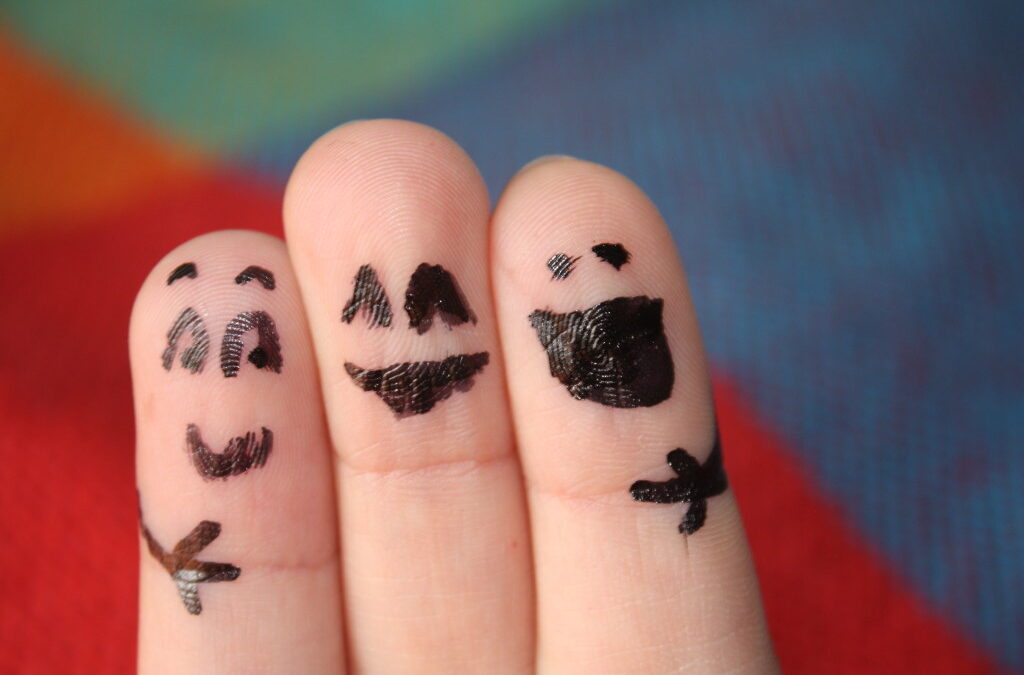
by Dr. Talia Marcheggiani, ND | Feb 16, 2015 | Culture, Emotions, Empathy, Gratitude, Love, Meditation, Mental Health, Mind Body Medicine, Mindfulness, Philosophy, Relationships, Self-care
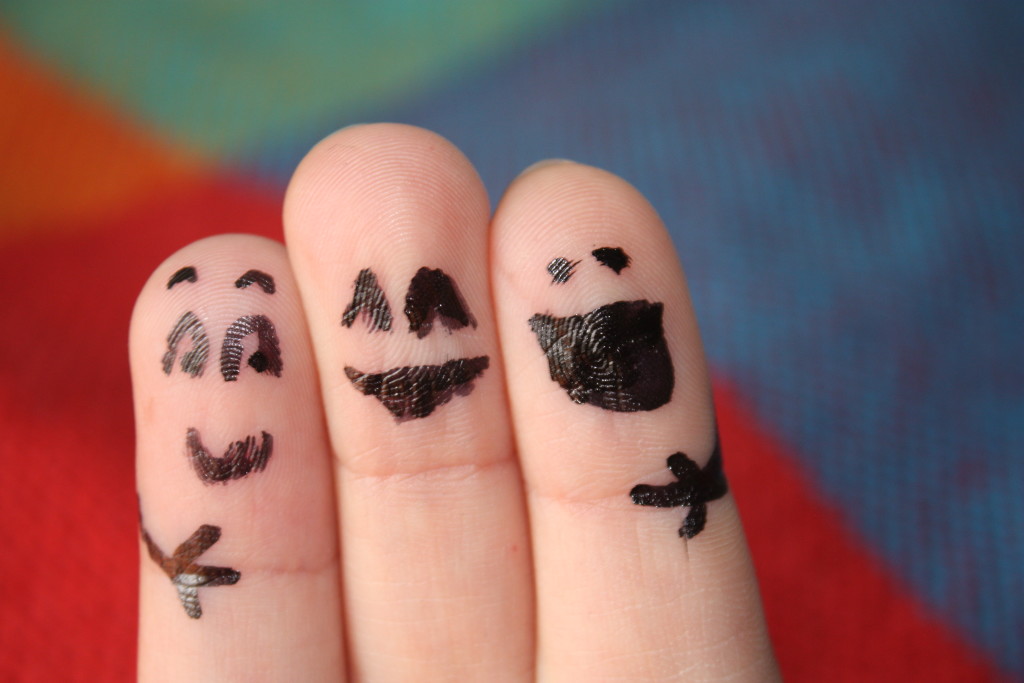 I was in an emotional crisis. My partner and I were fighting. It was my fault and the anxiety I endured from the confrontation was compounded by a deep sense of guilt and shame. I felt powerless as I waited for him to reach out to me so we could fix the problem while at the same time dreading the future confrontation we’d have. I felt isolated. My nerves were shot.
I was in an emotional crisis. My partner and I were fighting. It was my fault and the anxiety I endured from the confrontation was compounded by a deep sense of guilt and shame. I felt powerless as I waited for him to reach out to me so we could fix the problem while at the same time dreading the future confrontation we’d have. I felt isolated. My nerves were shot.
I texted the problem to my friend, A, the psychotherapist, while sitting on the couch in my pyjamas. At the time I remember wanting to include others in my misery, so that people would ask me about it and tell me everything would be alright, that it happens to all of us—it wasn’t that bad—and that I’d get through this thing.
A tells me, “There is nothing you can do now but wait. Waiting takes courage. So, while you’re waiting, don’t forget to self care.”
Self-care: the illusive term we’d often hear tossed around in naturopathic medical school. The hyphenated compound noun referred to anything from applying castor oil packs to getting enough sleep. In my mind, it brings up images of spa-like indulgences: bubble baths, candles, a junky novel—guilty pleasures. True self-care, however, is far from simple self-indulgences. Audre Lorde owns the most powerful definition of self-care I’ve heard, which is this:
“Caring for myself is not self-indulgence, it is self-preservation. And that is an act of political warfare.”
Rather than being a commercial phenomenon—involving trips to the spa, chocolate binge-eating and shopping sprees—self-care is political. Self-care challenges the inequality and oppression of race, gender, class and sexual orientation in society, by providing us with a means to improve our strength and ensure our survival.
When I read Lorde’s quote, I think of my Italian grandmother Nonna. Barely sitting down to enjoy the dinner she had prepared, she dedicated herself to the service of her family’s well-being. Like many other women, especially Italian Catholic women from her generation, she had been taught that any care for herself was selfishness—a symbol of the highest level of vanity and self-obsession. Nonna, like other women of various colours, religions and socioeconomic statuses, was taught to live a life of self-sacrifice. Any attention paid to her own well-being was regarded as an indulgent after-thought. Women are denied a societal sense of self-worth, which is then paradoxically medicated by advertisers telling us to “treat ourselves” to expensive perks because we’ve “earned it”. We are taught not to love ourselves and then instructed how to remedy this lack of self-love with expensive gifts.
Self-care is about finding ways to cultivate and feel deserving of self-love.
True self-care is essential for moving us forward. Because it prioritizes the health and well-being of a person, it affirms self-worth. This has the power to challenge the oppressive forces of racism, misogyny, classism, homophobia and other prejudices. Self-care helps with trauma recovery. It helps heal.
Self-care builds resilience.
We commonly fall into the thought-trap of regarding self-care inaccessible to certain populations; we assume it requires time, money and energy that not all of us have. Katherine from “I Am Begging My Mother Not to Read This Blog” accurately expresses the sentiment with an ironic twist:
“Make time for yourself. After you’ve run that 5K, started a load of laundry, harvested your organic vegetable garden, run to the bank, paid the bills, dazzled everyone with recipes that are cost-effective, healthy, and delicious, thought of something witty and clever to share with your social networking site, caught up on current events and politics, and cleaned all of the house, that special hour set aside just for you is so critical to your well-being.”
While she certainly has a point, something essential is missed in the definition of self-care. Self-care isn’t about shutting out the sound of your screaming children while you pour yourself a martini and fill the tub with hot water. Self-care is about intention, balance, mindfulness, self-awareness and, above all self-love. It is about taking responsibility for one’s own health and well-being. It is about recognizing your physical, mental and emotional needs and ensuring that those needs are met. Self-care is about reducing stress levels. If a pile of dirty laundry is stressing you out, then mindfully washing those clothes while watching the stress leave your body is self-care.
Self-care is an attitude. You can wash your dirty laundry with the frenzy of a thousand cortisol molecules and your mind on the massive list of other things yet to get done, or you can savour the positive feelings of achievement that comes from checking an item off the to-do list. You can breathe the scent of fabric softener, feel the warmth of the clothes that are coming out of the dryer and acknowledge that you are caring for yourself by ensuring you have clean clothes to wear the next day. It’s perspective and intention that creates self-care. That being said, laundry doesn’t necessarily have to be your thing either.
I have a patient who works 6-day weeks. When I asked her what she does for self-care, she looked at me, puzzled. “You know, self-care—how do you take care of yourself?” I tried to clarify. There was still no dawning of realization on her face. I silently chided myself for asking such an insensitive question.
And yet, my patient was taking care of herself. She was drinking more water, eating more vegetables and exercising. She was coming to see a naturopathic doctor and investing in her health. She was doing plenty of self-care; she just didn’t know it.
The SCaR Foundation outlines the BACE method of self-care, which helps us draw awareness to the simple acts we can engage in to care for ourselves.
Body Care involves exercising regularly, eating healthy food, taking medications and herbal supplements as prescribed. It also encompasses getting up to stretch while sitting at a desk, drinking water, getting enough sleep.
Achievement consists of finishing the daily tasks you have on your to-do list, laundry among them. It also includes working towards goals, like studying for a test or doing your work.
Connecting with Others includes spending time with friends, family, or a pet. Social connection is one of the reasons why we’re alive. Being able to reach out to others for help is one of the strongest manifestations of courage and resilience.
Enjoyment encompasses hobbies, favourite pass-times and indulgences. What activities bring joy and happiness to your life?
Self-care should not be pre-determined. When it becomes someone else’s prescription, it is no longer self-care.
Self-care is not always pleasurable. Sometimes it can be quite uncomfortable, such as making the decision to change careers, end a relationship or get in shape. It can be transformative, such as standing up for yourself. Self-love is a revolutionary act and revolutions aren’t always won peacefully. However, learning to listen to the body allows us to determine which decisions are coming from a place of self-love and not anger, hatred or fear.
My particular self-care story ended well. The very act of reaching out to a friend had already begun the process of self-caring (connection). After talking to A, I got up, changed out of my bathrobe, exercised, showered, and put on a homemade face mask of yogurt, honey and avocado (body care). I read fiction on the couch with a hot mug of cinnamon tea (enjoyment). I did yoga, meditated (body care) and went to a friend’s house for lunch, then another friend’s for dinner (connection). I took a course on a subject I love and met other healthcare practitioners while developing a new counselling skill (achievement). A part of me craved isolation, but I intuited that wouldn’t be a restorative act for me at that time and so I forced myself to move on with my activities, knowing that they would improve my positivity and resilience. In the end, because I took care of myself, I was able to face the situation from a place of strength and compassion for both me and my partner. Self-care helped me move past the shame and connect to the most powerful and loving version of myself.
That was my approach to self-care, because it was what I needed. At that time, I needed to feel healthy, strong and social. I needed to be reminded of who I was. Others in similar situations may decide that they need to grieve alone while watching When Harry Met Sally and devouring wine and popcorn, their faces stained with tears. Self-care is about knowing yourself and recognizing and honouring your needs.
Contrary to what we’ve been told, self-care isn’t selfish. It is the highest expression of connectedness. We can’t take care of others if we are not healthy. And we can’t be healthy without taking care of ourselves.
Self-Care Resources:
Methods-of-Self-Care : Free Ebook
Caring About Self-care : Article
Also, check out this Self-Care Journal, by Rachelle Abellar. It has sections for personal affirmations and action plans for when you’re feeling low. You can buy a copy at lulu.com.
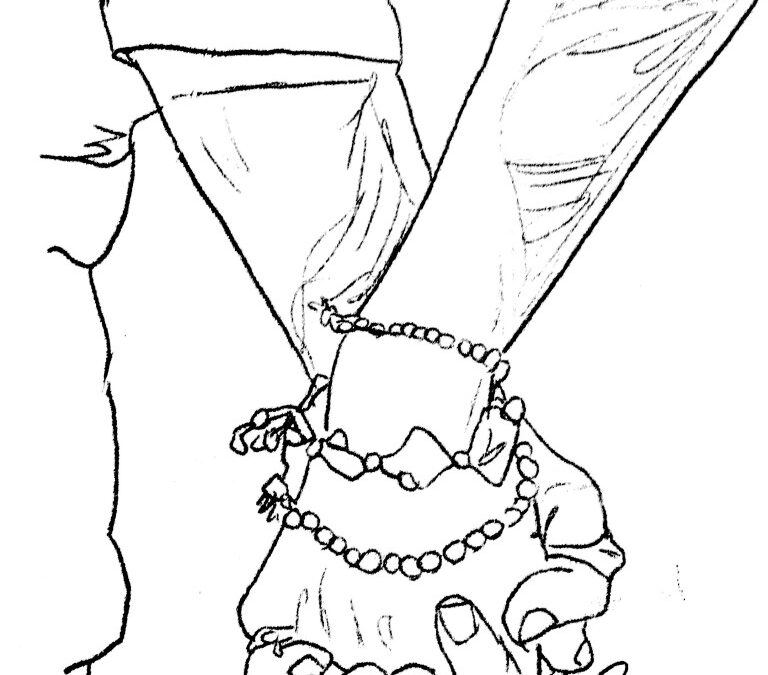
by Dr. Talia Marcheggiani, ND | Feb 2, 2015 | Love, Mental Health, Naturopathic Philosophy, Relationships
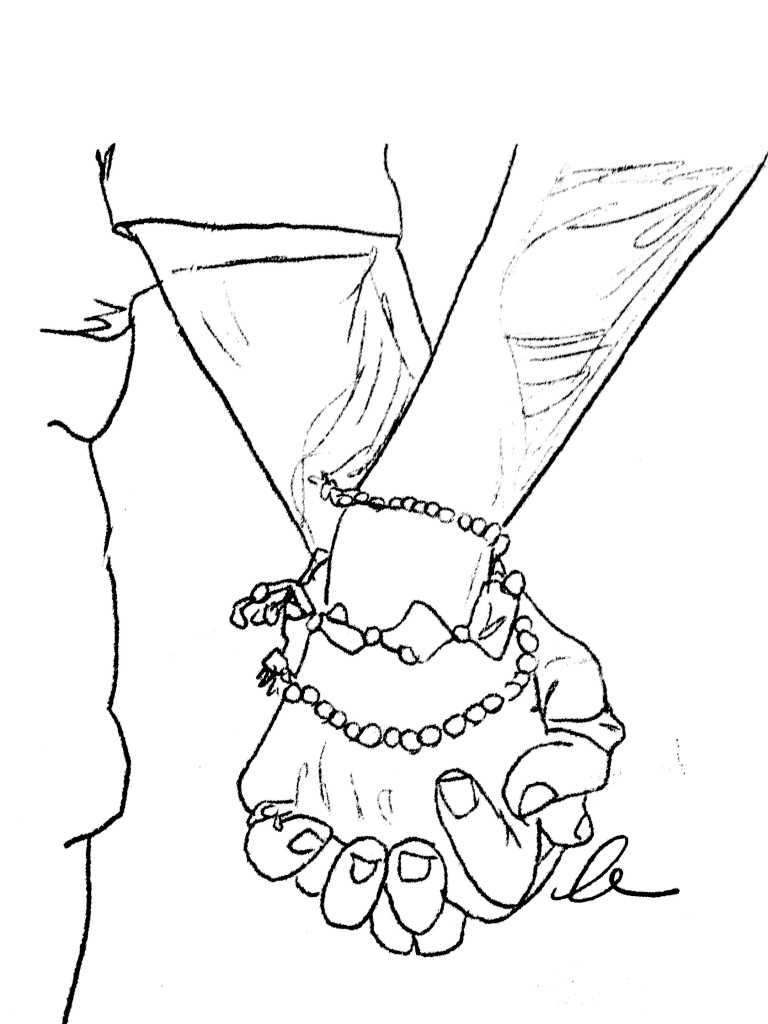 My classmate, A, has a treatment plan for me. He wants me to exercise—not the light walks I’ve been doing, but intense cardio intervals and weight-lifting. He wants me to get more sleep and drink more water. When he gives me the instructions, I feel slightly disappointed; I could have prescribed this plan to myself. In fact, even in telling him the story about my fatigue, I had already predicted what he’d recommend. I could hear myself admitting to not getting enough sleep and to often forgetting to drink water. I just hadn’t thought consciously about those facts for a while. Life and self-deception had kind of gotten in the way.
My classmate, A, has a treatment plan for me. He wants me to exercise—not the light walks I’ve been doing, but intense cardio intervals and weight-lifting. He wants me to get more sleep and drink more water. When he gives me the instructions, I feel slightly disappointed; I could have prescribed this plan to myself. In fact, even in telling him the story about my fatigue, I had already predicted what he’d recommend. I could hear myself admitting to not getting enough sleep and to often forgetting to drink water. I just hadn’t thought consciously about those facts for a while. Life and self-deception had kind of gotten in the way.
In one way, because I had the answer in front of me, and in another way to please A, who I’d have to report back to the following week, I started to exercise. When I got home, I stopped telling myself that a short, light walk would be enough—I had to start sweating. I stopped kidding myself that five hours of sleep a night was enough and that watching TV on my laptop while lying in bed was a substitute for rest. I made the changes and I began to feel better.
I might have had the internal fortitude to do all of this on my own, but it was talking to someone I trusted that gave me the push I needed. I saw my issues and current lifestyle reflected in A’s eyes. The mirror he held up to me gave me the jolt required for me to start taking care of myself.
The healing relationship is something that is not often credited in mainstream medicine. I am taking a course in Motivational Interviewing (MI) in which we learn to tailor our patient interactions to inspire patients towards making healthy changes in their lives. MI helps people move past places of ambivalence because it acknowledges that, while patients have the power and authority to make changes, they also need the therapeutic relationship to start the first steps of change. We’re often told to share our goals with a friend. One reason for this is that we are held accountable. Another reason is that saying the words out loud helps solidify the need to make a change. Telling another person mirrors our needs, wants and ambitions back to us. Through the act of sharing we gain mutual support and are more likely to move forward with our goals.
When I ended a 5-year relationship and entered the dating scene in late winter of last year, I often joked to my friends that dating was “free therapy.” I had to push myself to leave my bubble of comfort and sit across from a stranger. I had to risk being evaluated by someone else. Dating showed me the need to take chances with my heart and express my feelings and vulnerability. I was confronted by my insecurities—feelings of unworthiness, worry that I wasn’t attractive enough and a deep-rooted fear of rejection and abandonment. I was forced to stare these fears down, acknowledge their existence and work to move past them. This experience helped me become a better person and a better doctor, improving the relationships I have with my patients and coworkers.
Relationships expose our wounds. After all, the human experience is formed in relationship. Even withdrawn introverts rely on others for their daily experiences. Hermits living in the woods are reliant on relationships, or lack thereof. Their identity, forged by their need to escape from others through the conscious rejection of relationships, still reflects their intersubjectivity. Our earliest relationships establish our deeply held beliefs about ourselves and the world. Everything we learn about ourselves is through relationships with other people.
I read this wonderful quote in an article recently,
“Our wounds were formed in-relationship and can only be healed in-relationship. No amount of meditation on a mountain can solve your mommy issues.”
Healing, whether physical, mental, emotional or spiritual, must be done through interpersonal connection. Relationships help expose our wounds while showing us what we can do to address them. While we ultimately heal ourselves, we intuit that the healing process needs the hands of another. Through my last relationship I’ve seen my insecurities held up in front of my face. The need for developing my sense of self-worth, self-love and self-acceptance began to cry out loudly, when reflected through the prism of the relationship I was in. When we’re alone it is easy to ignore these callings—there is no one beside us, challenging us to evolve, and it becomes easier to settle into our ways.
Self-work cannot be done alone.
Healing requires reflection, mirroring, empathy, storying, support and, sometimes, accountability. It requires more than just expertise, self-will and determination. When working on ourselves interpersonally, we are forced to see ourselves through the eyes of another human being and develop the darkest, hidden parts of ourselves, becoming whole.
Therefore, true healing cannot be done outside of relationship. We need someone to share and rewrite our stories with. In some cases, it can be a partner, family member or friend. In others, the ears, eyes and hands of a trusted professional can help you move to the next level of conscious healing and self-evolution.
In short, Googling your symptoms can’t heal you.
I love this quote from Julie Delpy’s character in the movie Before Sunrise:
“If there’s any kind of magic in this world it must be in the attempt of understanding someone sharing something. It’s almost impossible to succeed, really, but who cares? The answer must be in the attempt.”
Healing is in the attempt.
by Dr. Talia Marcheggiani, ND | Jan 12, 2015 | Family, Finding yourself, Healing Stories, Health, Letting Go, Love, Mental Health, Mindfulness, Philosophy, Poetry, Relationships, Self-care, Self-esteem, Self-reflection
I’m grateful for endings
that merge into new beginnings,
karmic cycles and their painful lessons
and excruciating yearly rituals that often end
in transformations.
I’m grateful for long late-night horizontal conversations
tiny loving gestures
unity
and the Universe announcing her timing
loud and clear.
For experience.
For strength and resilience
reflected
in the mirror.
For friends and family who linger
around the corner
ready to reemerge
when you call them.
For cold winter winds that bring loss
and change
and propel us on.
For memories that needn’t be analyzed;
they’re simply gifts to cherish and remember.
The winter winds push us
on through the frigid night
into spring.
by Dr. Talia Marcheggiani, ND | Jan 3, 2015 | Gratitude, Health, Holidays, Medicine, Mindfulness, NPLEX, Professional Development, Relationships, Volunteering
2014 has been a year of beginnings and endings. I ended two major relationships: one with the school I went to for 4 years and another with a long-term boyfriend, and began two new ones: I embarked on my own career as a naturopathic doctor and started a new relationship. The past year for me represents the tail end of several important life-cycles and the promise of exciting new beginnings.
It was the year I turned 28, starting a new 7-year karmic cycle. I broke up with my now ex-boyfriend of 5 years and finished my studies at the Canadian College of Naturopathic Medicine. I dedicated a large portion of my time to social activities, self-expansion and personal growth. I got out into the world and made new friends while strengthening old friendships. I became a little more daring and a lot more open. These changes helped groom me into a better doctor.
I spent the summer working, dating and studying for NPLEX II. I embraced new opportunities and made many new friends with co-workers, ex-classmates and complete strangers. I became more artistic.
I went to India in August and September after finishing NPLEX II. After 4 years of constantly doing, it felt wonderful to relax into the chaos of India and become an observer for a month. Simply being felt foreign and very uncomfortable at times, but also balancing. I relished the long train rides, the heat and the variety of cultures, smells and colours – especially the food. India contains a furious energy about it. It was a wonderful experience and a brilliant way to open myself up further to new experiences while exploring a different corner of the world.
When I arrived home from India I was ecstatic to find that I had passed NPLEX II and my Ontario board exams. I applied for my naturopathic licence and began looking for clinic spaces. When I met Heather Osler at the Bloor West Homeopathic & Wellness Clinic, I immediately knew that the space was an excellent fit. So far, I’ve been right. The calming, healing energy of the space and the wonderful staff have been amazing. I have been blessed with a practice that has been slowly and steadily building from my first week. I am grateful for the wonderful patients that have booked with me in 2014. I have learned a lot from them and have had the opportunity to help them feel better, something that I love to do.
2015 brings with it the promise of more successes in private practice as I grow my existing patient base and eventually add more practice days to my week. I look forward to connecting with my ex-classmates and new colleagues, to giving talks and writing blogs and connecting with the community. I will be taking a course in Motivational Interviewing (MI) at OISE at the University of Toronto this January and February. I also hope to take more courses in psychological methods to strengthen my ability to treat mental health conditions; I plan to find ways to bring my love for art and writing to the therapeutic experience.
I have the opportunity to volunteer 1-2 days a month at the Yonge Street Mission health clinic and am looking forward to spreading naturopathic medicine to the community, a passion of mine. Between my private practice and volunteer work, I hope to quickly expand the number of people I help with naturopathic medicine.
2015 will bring with it creativity, in the form of exciting new writing projects and an effort on my part to make time for painting and consuming art.
I hope 2015 will be a year of love, bringing with it more fulfilling relationships and the opportunity to strengthen my existing ones with friends, my significant other, my family and, of course, my Colombian yorkie, Coco. I learn so much from my relationships and they remain the most important part of my life. They encourage me to grow and continue to challenge me to become a better person, writer and doctor. I hope to find mentors both inside and outside my profession that challenge me to continue to grow and provide me with needed guidance on my journey.
I plan to travel in 2015, to Puerto Rico, to visit the home of a dear friend and his growing family and back to Guatemala, to see my best friend in her tiny, bohemian village. I would also love to do a silent meditation retreat this year, finding more centring and balance.
I also know that 2015 will be about my own personal health. I have resolved to cut out sugar, drink more water and dedicate myself to becoming physically fitter by engaging in more yoga and strength training. I also resolve to strengthen my mindfulness practice and meditate more regularly, which I believe will help me become more conscious and present, both as a human and as a healthcare practitioner.
Most of all, I hope that 2015 will be about gratitude. As I become older, time seems to pass all the more quickly and I find this to be an alarmingly unpleasant realization. As a lifelong student and now a professional running her own business, I often find myself consumed by future goals, wants and needs, which interferes with my ability to live in the present moment, be reflective of and grateful for all the blessings I have been given in my life and currently enjoy. Dedicating myself to counting these blessings helps to anchor me to the present moment and feel happier with the wonderful life I’ve been given and the wonderful people who surround me.
2014 was an amazing year of transformation and growth. While Back to the Future II promised us a 2015 of flying cars and 80’s-style sneakers that automatically lace themselves, I believe the real 2015 will be an even better year filled with strength, opportunities for further growth and development and love. I hope to build more confidence and wisdom this year, develop more confidence in myself and add more stability to my life. 2015 will be about building strength and foundation.
I wish all of you the best this 2015. What are your reflections, hopes and resolutions for the coming year?
by Dr. Talia Marcheggiani, ND | Dec 16, 2014 | Family, Gifts, Health, Relationships, Tea
It has been two years since I wrote this popular post. While we’re still strapped for cash, I decided to create an updated version of gift ideas for naturopathic students, doctors and people alike. These gifts are designed to fit the tastes and lifestyle of a health-conscious individual and are geared towards creating a minimal impact on the environment and your wallet while supporting local business and artisans. Happy Holidays!
Supplements:
I have decided that this year my family is receiving vitamin B12 shots and vitamin D drops. I love the d-drops that Shopper’s Drugmart sells. They are inexpensive and have only medium-chain triglycerides and flaxseed oil as additives. This provides the fat needed for vitamin D absorption. Each drop gives you 1000 IU so it’s quick and easy to dose. Vitamin D deficiency can result in autoimmune disease and decreased immunity, hair loss, fatigue and increased risk of certain cancers. So supplement daily from fall until spring. Other great go-to supplements are fish oils, probiotics and herbal tinctures. Talk to your naturopathic doctor about quality brands and the correct dosing and indications.
Teas:
This is a fan favourite. You can visit David’s Tea or Teavana or other local places for ready-made, delicious loose leaf teas. I found some great teas at Adagio Teas and ordered a massive bag. Or you can shops at Perfect Herbs (for practitioners), the Herbal Dispensary or Clefs de Champs, and mix and match herbal concoctions according to the personality and health needs of your family members. Is your brother suffering from premature hair loss and work-related stress? Mix in some Fo-ti and liquorice root. Is your father always on edge? Add in some chamomile and lavender to calm his nerves. Put the containers in a mason jar and create fancy labels and instructions for them. Consider infusion teapots of these Libretea glass mugs, recommended by a friend and colleague.
Natural Body Care:
You can make your own (start with my recipes page or wellnessmama.com), which I prefer, or you can buy from local businesses and artisans; you can start with some amazing products from these lovely herbal ladies or visit a crafts or health fair. Alternatively, Winners often amazes me with some of the organic and natural products that they sell for decent prices, including a face cream with hyaluronic acid made in Italy and argon oil serums. If you’re pressed for cash, I’ve made a great face mask out of matcha green tea powder, castor oil and coconut oil.
Natural soaps, snacks and healthy baking essentials:
Bulk Barn is my new favourite natural haven. I found $1 handmade soaps of evening primrose oil and goat’s milk. I also saw $3 bags of kale chips with vegan seasonings like hemp cream and chives. You can put together a body care and snack package, hooking your loved one up with a selection of gluten-free flours, cereals and even protein powders. You can even purchase glass jars for creating pretty packaging.
Castor oil:
Seems silly, but this really is the gift that keeps on giving. Include a package of instructions on how to create castor oil packs (you can even include a hot water bottle), hair masks and full-body massages. I love castor oil and use it in some way everyday. Alternatively, you can also buy your loved one a quality coconut oil.
Books:
Always a great idea for a gift and the prices range dramatically, making them appropriate for any budget. On my wish list are, Healing Depression Naturally, Motivational Interviewing 3rd Edition, Narrative Practice and Food and Healing. Ebooks are often free or very inexpensive. They are another great option and easily accessible on any tablet, smartphone or e-reader.
Coffee Passports:
Toronto Indie Coffee Passport: just because that’s what I want for Christmas (and out of life in general).
A session (or two) with a naturopathic doctor:
Intakes are $150 and covered under most extended health insurance plans. Give your loves ones the gift of health while supporting a local professional. Related options are a package of massages, a gift certificate to Body Blitz or a series of yoga or meditation classes.
Handmade items:
I love Etsy. Also check out Christmas markets and one-of-a-kind shows. Or get in touch with crafty friends who are selling their handiwork. Last year I bought “magic bags” for the whole family, which were made by a particularly crafty friend. Now whenever anyone has sore muscles, indigestion or a headache, we microwave or heat up a bag and enjoy the warmth.
A night out:
This is usually my go-to gift for my father who much prefers quality time over material items. We take him to a movie that he wants to see, a comedy show at Second City ($15 a ticket for students), Art Battle Toronto (held one Tuesday night a month) or Toronto Poetry Slam and out to dinner. Or you can cook a nutritious and delicious dinner at home. And in that case, you’ll need to buy:
A bottle of local wine or a case of craft beer:
I love Ontario wines and they are usually pretty inexpensive, sometimes organic and local. Light a fire, put on some wool socks and Christmas music and enjoy a bottle of red with some organic chocolate from ChocoSol (the most delicious thing I’ve eaten in a long time) and enjoy each others’ company.
A homeopathic first aid kit:
A must-have for any natural health nut, these kits contain a variety of acute, low-potency homeopathic remedies for any health occasion. These contain remedies for a variety of acute conditions including post-surgeries, bruises, bug-bites, coughs, colds and headaches. You can also consider a drainage kit or homeopathic detox kit.
Wall art:
Another personal go-to. I took pictures of mossy, graffiti-covered walls while traveling in India, printed them in 8×10’s and framed them for my brother’s new house. It adds colour, love and memory to your walls and transforms a space while being a meaningful yet inexpensive gift.
Plants:
Decorative or practical (herbs, spices, vegetables), plants are always a natural go-to for the lover of all things green. I’ve seen cool bags for making living walls at local nurseries, which can reduce the carbon footprint and increase the feeling of nature and tranquility to any indoor space.
What about you, what are your favourite go-to gift ideas for the healthy and environmentally conscious individual?

by Dr. Talia Marcheggiani, ND | May 19, 2014 | Emotions, Love, Relationships, Writing

There is nothing wrong with living on flat ground. In fact, it can be quite gratifying and liberating. You can walk in whichever direction you choose: right, left, east, west, diagonally. Flat ground is safe. It’s familiar. However, after a while, it becomes inevitable that you’ll want to experience the world from different vantage points. You’ve heard that there is real beauty up there, above the clouds. And that’s when you decide to start mountain climbing.
(more…)
by Dr. Talia Marcheggiani, ND | Apr 8, 2014 | Fiction, Relationships, Writing
I enter the used clothing store, my expectations healthily repressed; it is better to approach the vintage-shopping experience from a position of openness to possibility, devoid of excessive hope and need. If one starts in this way then one has nowhere to go but to the land of pleasant surprises and amazing finds for under a dollar.
I browse through the racks, taking in the moth-balled musty scent of used clothes. Perusing the garments is like visiting a library or a bookstore. The fabrics contain the memories of the people who bought them, wore them, loved and hated them (secretly) but remembered to always have it on when Grandma came to dinner. I wonder which blouse was tossed to the floor in anticipation of passionate lovemaking and which pieces of clothing have borne witness to arguments, death and divorce. Which sleeves contain the traces of desperate tears? If the clothing could talk, I can only imagine the stories they would tell about desire, disgust, revenge, passion, despair, loneliness, bitter disappointment and the tragedy of lives of promise that fade away unnoticed.
(more…)

by Dr. Talia Marcheggiani, ND | May 16, 2013 | Balance, Community, Culture, DIY, Family, Finding yourself, Happiness, Health, Letting Go, Mental Health, Mindfulness, Nature, Nature Cure, Philosophy, Relationships, Spirituality, Stress

Taganga, Colombia
What does space mean to you? Is it a necessity? A status symbol? A burden?
A friend and I recently went to see a documentary at the Toronto Hot Docs festival called Tiny: A Story About Living Small. The doc follows a young couple who embark on the project of building their own tiny house, measuring roughly 100 square metres, in order to secure their footing in an increasingly growing movement of downsizing living spaces in favour of simplicity.
(more…)

 As a child, I was obsessed with stories. I wrote and digested stories from various genres and mediums. I created characters, illustrating them, giving them clothes and names and friends and lives. I threw them into narratives: long stories, short stories, hypothetical stories that never got written. Stories are about selecting certain events and connecting them in time and sequence to create meaning. In naturopathic medicine I found a career in which I could bear witness to people’s stories. In narrative therapy I have found a way to heal people through helping them write their life stories.
As a child, I was obsessed with stories. I wrote and digested stories from various genres and mediums. I created characters, illustrating them, giving them clothes and names and friends and lives. I threw them into narratives: long stories, short stories, hypothetical stories that never got written. Stories are about selecting certain events and connecting them in time and sequence to create meaning. In naturopathic medicine I found a career in which I could bear witness to people’s stories. In narrative therapy I have found a way to heal people through helping them write their life stories.









